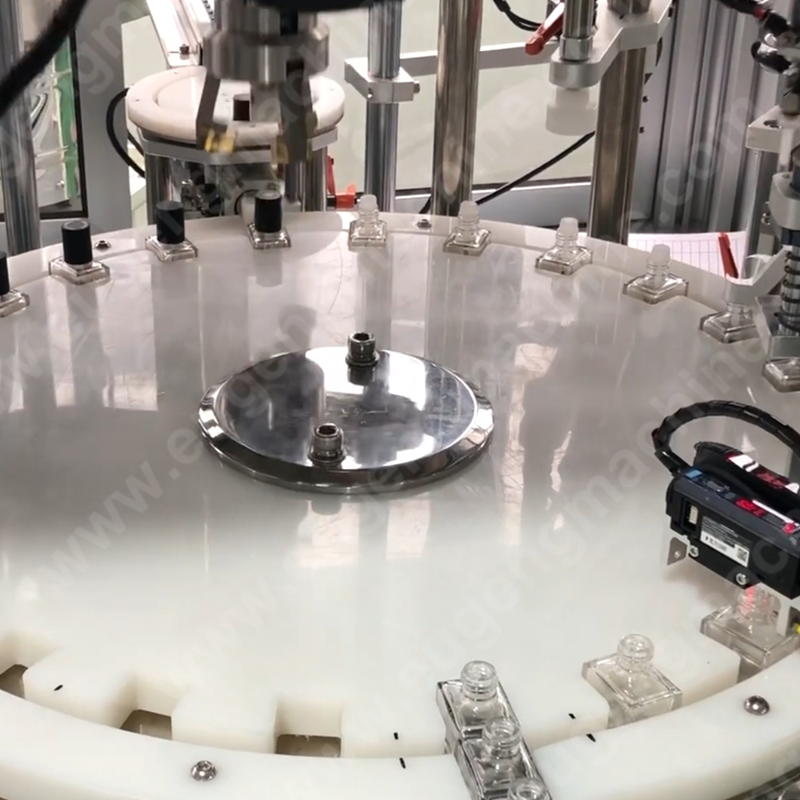Introduction
One of the most essential factors of nail lacquer viscosity that impacts filling speed and accuracy. Density liquid is high viscous nature pose serious challenge for filling equipment, due to scale precision doser relative power with material head space w/ out spilled or waste. For all such challenges, manufacturers must know how nail polish filling machines can help in overcoming this to make their production lines less tedious. This article describes the design features and operational practices that enable nail polish viscosity to be controlled by filling machines.
Machine Design for Viscosity Management
High viscosity nail polish filling machine: chronicle special, as the name also highlights detailed design to mousse high viscosity Pump is the name of one of such basic component of these machines. High viscosity pumping need for nail polish, thus medical pumps(peristaltic)need for high efficiency easy cleaning as they can be positive and negative type. Centrifugal pumps are process or transfer pumps based on a rotary principle rotating will create a vacuum in the pump which moves the product into and through the pump to the bottle. Systems such as ceramic pump piston filling systems guarantee the correct amount of fill volume for viscous liquids.
BW Filler Bottom Gravity Filling Systems are ideal for thicker liquids, such as nail polish. They utilize gravity to drop the product into the bottle so there is very little need for pressure pumps and high viscosity will mostly just result in a complete failure.
Filling Nozzles and Viscosity
Filling nozzles are another important factor for impacting viscosity control features. Specifically, the nozzles must be thick enough to contain nail polish so, they can't clog or leak. The filling circuit should be gentle in order not to crush the glitter or other delicate materials used in colors with glitter. The same goes with the materials which make the nozzle because some of these can deal better than others in viscosity management, as some are less sensitive to slightly more tacky polishes.
Machine Calibration for Viscosity
Calibrating filling machine for different viscosity of polish is really important to obtain accurate volume. Most of these filling machines are highly customizable and control parameters can be changed to apply for specific product formulations. Starting with flow rates, fill times and pressure levels adjustments which affect high viscosity product management.
In addition, regular calibration checks and maintenance schedules are necessary to ensure the accuracy and efficiency of the filling process. As the gears of the machine run over time, they wear out and affect the functioning of the device, hence require some periodical maintenance to get it at its optimal level.
Automation and Viscosity Compatibility
The viscosity is one of the important aspects to control while filling nail polish, and there automation comes into play. Automated systems can monitor fill levels and optimize machine settings on the fly to maintain consistent levels of product. This is especially crucial for high viscous products, wherein slight deviation in fill level means a lot in the end product.
They also help in detecting and rejection of the failed units thus raising the overall quality of the product. These systems detect under and overfilled bottles so that they can be removed from the line for inspection or repackaging.
Material Compatibility and Viscosity
Separately, almost all different formulation of the product should be accommodated by nail polish filling machines. Changes to the film-former and plasticizes will change the viscosity of the product, requiring a machine capable of filling different viscosity without losing fill accuracy.
Polishes that have glitter or pearls in them require special treatment. Along with affecting the flow of the product itself, these components can also impact functionality so that it is recommended to have additional features in the filling machine like gentle agitation or specialized filling methods to make sure the product flows evenly into a bottle.
Maintenance and Viscosity Management
Before, everybody understands that cleaning and maintenance play a role in clogging prevention, it is also important for the machine to clean itself while transferring high viscous products. Capping and filling bottle nozzles are very prone to getting blocked so need a good clean after every use.
Get periodic preventive maintenance checks done to ensure that all elements of the filling machine are in functional condition. This involves inspecting pumps, nozzles and seals — while ensuring all moving parts are lubricated against wear with no scoring present.
Conclusion
In conclusion, the viscosity of nail polish must be controllable by a filling machine for producing nail polish as it will impact efficiency and precision. Dealing with the high-viscosity characteristics of these types of products requires a specialized pump, well-conceived fill nozzles, and meticulous machine setup and sophisticated automation — all present with these machines. And with proper maintenance, as well a regular bespoke melamine and other material compatibility check, performance of the machine is enhanced more. Hence, manufacturers need to invest in a filling machine that is not only malleable enough to adapt with the product viscosity variation but is also an efficient production filler and outputs consistently high-quality products.

 EN
EN
 AR
AR BG
BG HR
HR CS
CS DA
DA NL
NL FI
FI FR
FR DE
DE EL
EL HI
HI IT
IT JA
JA KO
KO NO
NO PL
PL PT
PT RO
RO RU
RU ES
ES SV
SV TL
TL IW
IW ID
ID LV
LV LT
LT SR
SR UK
UK VI
VI HU
HU TH
TH TR
TR FA
FA MS
MS UR
UR BN
BN LO
LO LA
LA PA
PA
